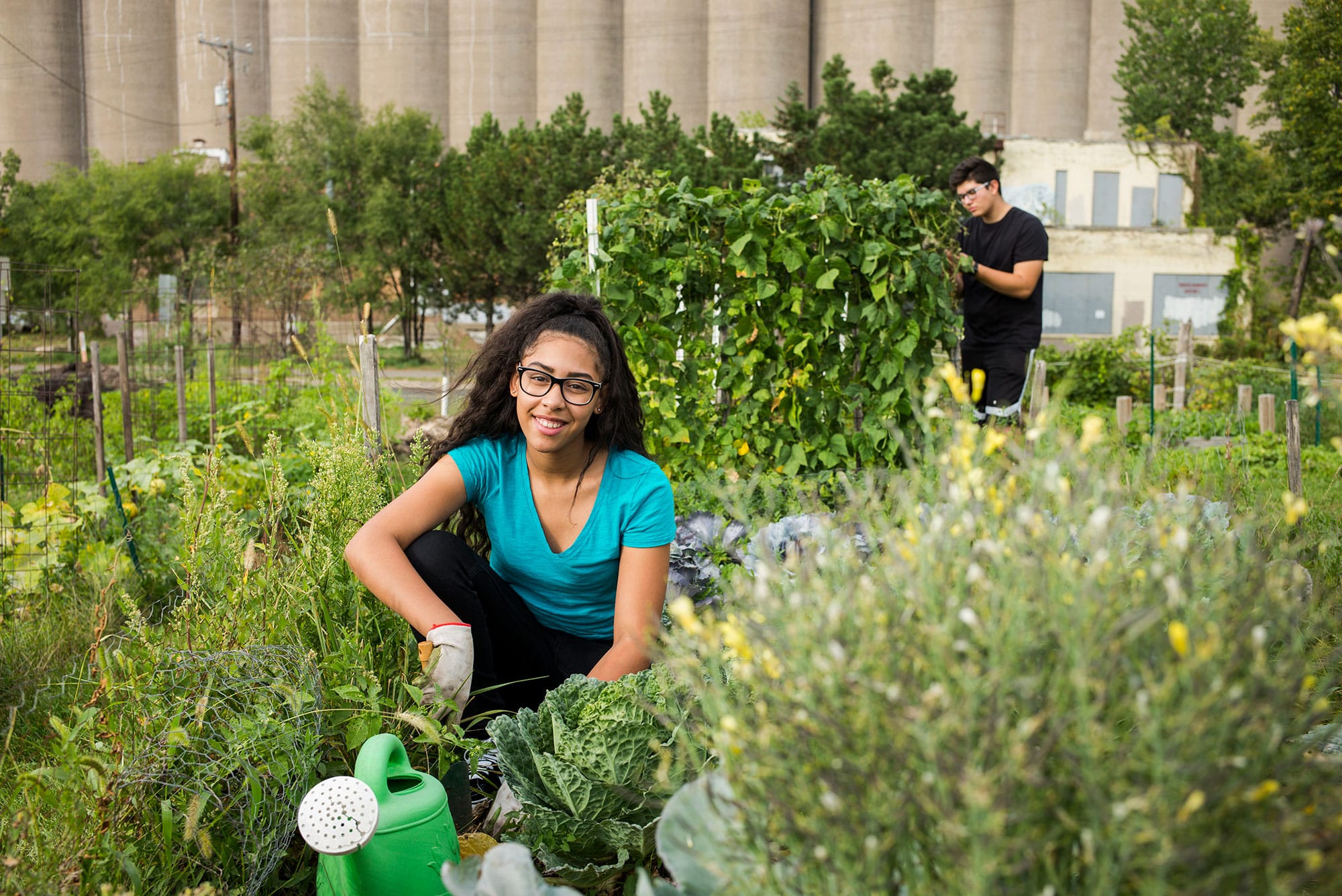Pollinator Pathways
What We’re Doing
Creating essential habitat for threatened pollinator species.
Our Goal
Build pollinator-friendly and native ecosystems across Rochester, MN.
Did you know that one out of every three bites of food you eat is dependent on pollinators to reproduce? That’s right: busy as a bee isn’t just a phrase. These pollinators are hardworking insects that help boost seed production and fruit development, meaning healthier ecosystems and communities. With the help of other pollinators like butterflies, birds, and bats, some of our favorite foods exist because of these underappreciated animals: apples, bananas, blueberries, strawberries, melon, peaches, potatoes, vanilla, almonds, coffee and chocolate.
But right now, habitat loss, disease, parasites, and environmental contaminants have all contributed to the decline of many species of pollinators like Minnesota’s state bee, the endangered Rusty Patched Bumblebee. Pollinators that can’t find the right quantity or quality of food, like nectar and pollen from blooming plants within flight range, can’t survive. Put simply, there aren’t enough pollinator friendly plantings to support these essential creatures. But with the help from the Minnesota Board of Water and Soil Resources and on behalf of the City of Rochester, TPL is working to change that—and you can too!
Through the Pollinator Pathways program, we’ve received funding to build pollinator habitats across Rochester at residential homes, municipal sites, and schoolyards, like Franklin Elementary, with the goal of enhancing pollinator habitat in key corridors and raising awareness for residential pollinator protection. By swapping out manicured lawns that can carry pesticides and fertilizers for diverse and native plants, we can build pollinator habitats right in our own backyards, literally.
If you’re a resident of Rochester looking to create a pollinator oasis at your home, apply for funding today by filling out this form. The bees—and the trees, and the fruits, and the crops—will thank you!
What Applicants Receive
Applicants can receive up to $750 for reimbursement of eligible expenses associated with their project. Participants are required to match 10%. This can be in the form of in-kind time spent on coordination and installation of the project. Program participants must agree to maintain their project for a minimum of 5 years.
In addition to funding, applicants will receive technical assistance for site preparations, seed mix and planting design, spacing, and species recommendations.
Acceptable Expenses

There are four types of planting options. Projects should incorporate three flowering plants during each bloom period (spring, summer, and fall).
Approved List of Native Pollinator Plants
Handouts and Resources
-
Once approved, before the project begins:
- Take and submit “before” photos
- Participate in a site visit and pre-planting workshops
- Submit a preliminary budget and design by email to [email protected]
During the project:
- Take “during” photos
- Track your volunteer time using the Hours Log. You will need to submit this along with project expenses and receipts using the Resident Report Form once the project is complete. If you need to be reimbursed while working on your project, please email to [email protected]
After the project is completed:
- Take a photo of the completed project!
- Submit your time, expenses, receipts, and photos using the Resident Report Form
- Program participants are asked to maintain their project for a minimum of 5 years
-
My application wasn’t selected but I still want to create a pollinator habitat. How can I do that?
Individuals can apply for $350 in Pollinator Pathways funding through Blue Thumb. You can find the application information on the Blue Thumb’s website. Depending on available funding.
Individuals interested in moving forward with projects on their own are encouraged to utilize the online resources provided by the Minnesota Board of Water and Soil Resources specifically designed for pollinator habitats in residential settings. The Planting for Pollinators Habitat Guide goes into detail about different planting types, site preparation, and maintenance.
Additional questions? Email [email protected].
-
Learn more about the Pollinator Pathways program.
Explore before applying:
- Blue Thumb’s Online Learning Series
- BWSR’s Planting for Pollinator’s Guide
- Native Plant Nurseries in MN
- BWSR’s Pollinator Toolbox
- Care Guide for Lawns to Legumes Planting
Applicant Resources:
-
Application Timeline
November 1, 2024: Application opens
March 1, 2025: Application closes
End of March 2025: Site Visits and Applicants Selected/Notified
May 2025: Workshop: Introduction, Habitat Design, and Budgeting
June 30: Preliminary Budgets and Designs Due
July & August: Plantings
End of Summer/Early Fall: Workshop: Planting/Wrap-up
2610 University Avenue
Suite 300
St. Paul, MN, 55114
(651) 760-0179
[email protected]
651-999-5304
[email protected]



